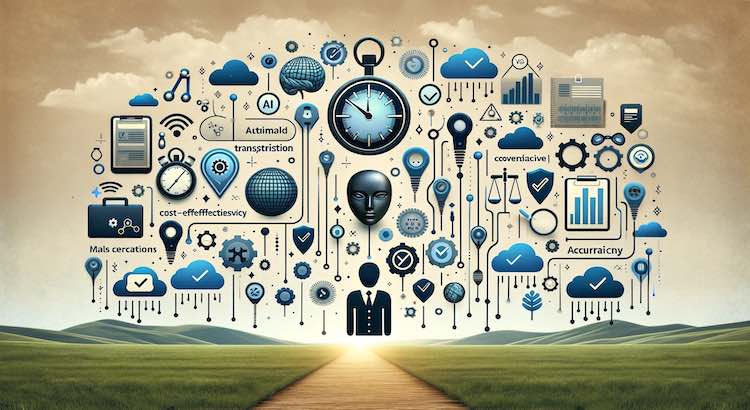Analyzing the Cost-Benefit of Automated Transcription Services
Today, the rapid growth of digital audio and video content has driven many people and companies to look for fast and affordable ways to turn spoken words into text. Everyone from business professionals and podcasters to researchers needs accurate transcripts. One big question often comes up: Is automated transcription a better deal than traditional human transcription? This article breaks down the costs and benefits of automated transcription services so you can decide what works best for your needs.
The Rise of Automated Transcription
Automated transcription uses artificial intelligence (AI) to turn speech into written words, with machine learning tools improving over time (Statista, 2023). Companies now offer AI transcription that is:
- Fast - Results come back in minutes, not days
- Affordable - Costs much less than human services
- Convenient - Easy to use for anyone, anywhere
These tools work best with clear audio. As the technology gets better, more people are trying out automated solutions for large projects or simple note-taking.
Cost Analysis: Automated vs. Traditional Transcription
Automated Transcription Costs
Automated services usually charge by the audio minute, often just a few cents. For example:
- Starts at about $0.10 to $0.30 per minute (TechCrunch, 2022)
- Monthly subscriptions lower the cost even more
- Pricing often includes unlimited revisions or downloads
For the latest options, check out AI transcription subscription plans or compare transcription pricing for bulk needs.
Traditional Human Transcription Costs
Human transcription services are more expensive because a real person listens and types:
- Costs range from $1 to $3 per audio minute
- Extra charges for rush jobs, complex topics, or multi-speaker audio
- Pricing reflects high accuracy and tailored formatting
If professional quality is a must, the extra cost pays for experience and attention to detail.
Benefit Analysis: What You Get Beyond Cost
Accuracy
Accuracy matters a lot. Automated AI can be up to 85% accurate for clear recordings (Forbes, 2022). But here are the differences:
- AI works best with single speakers and no noise
- Has trouble with accents, technical language, and background sounds
- Human pros catch more details, context, and subtle meanings
For critical industries like legal or medical, human review or services like transcription proofreading is still the safest choice.
Turnaround Time
- Automated tools deliver transcripts in minutes
- Manual transcription usually takes several hours or even days
- AI services offer quick uploads, instant previews, and fast downloads
For urgent deadlines, automated solutions shine.
Customization and Flexibility
Every project is different. Only humans can:
- Follow strict formatting or style guides
- Add timestamps, speaker labels, or notes for clarity
- Handle complicated content or special requests
If you need custom formatting, pair automated output with proofreading or a tailored transcription service.
Economic Viability: When Does Automated Make Sense?
Automated transcription offers a smart solution in many cases:
- Large volumes of audio—think interviews, research, or podcasts
- Drafting meeting notes or making content searchable
- When budget or turnaround time matters more than perfect detail
One survey found that nearly 60% of businesses plan to increase their use of AI for productivity (PwC, 2022).
But for sensitive or complex jobs where errors cost more, traditional methods or a mix of services are best.
Efficiency and Productivity
Automated transcription can save working hours each week (Gartner, 2021). Here’s how:
- Upload, transcribe, and download results when you want
- No waiting for human schedules
- Frees up staff to work on higher-value tasks
However, AI transcripts may need review and editing. Using proofreading services can help bridge the gap for accuracy without losing speed.
Making the Right Choice: Automated or Human?
Choose Automated Transcription If:
- You have clear audio and multiple files
- Time is limited, and you only need a general transcript
- You want to save money on large projects or recurring tasks
Choose Human Transcription If:
- Audio is unclear, noisy, or technical
- Accuracy is critical, such as for legal or medical documents
- Formatting, translation, or custom requests are needed
Conclusion: Let GoTranscript Help
Choosing between automated and traditional transcription comes down to what matters most for your project—speed, price, or precision. As technology improves, automated transcription will get even easier and more reliable. For now, the best approach is matching the service to your needs and budget.
GoTranscript offers a full range of solutions, from fast automated transcription to expert human transcription, proofreading, and other text translation and audio translation services. Transparent transcription pricing makes it easy to order exactly what you need. You can order online today and get started in minutes.



















 Verified Order
Verified Order